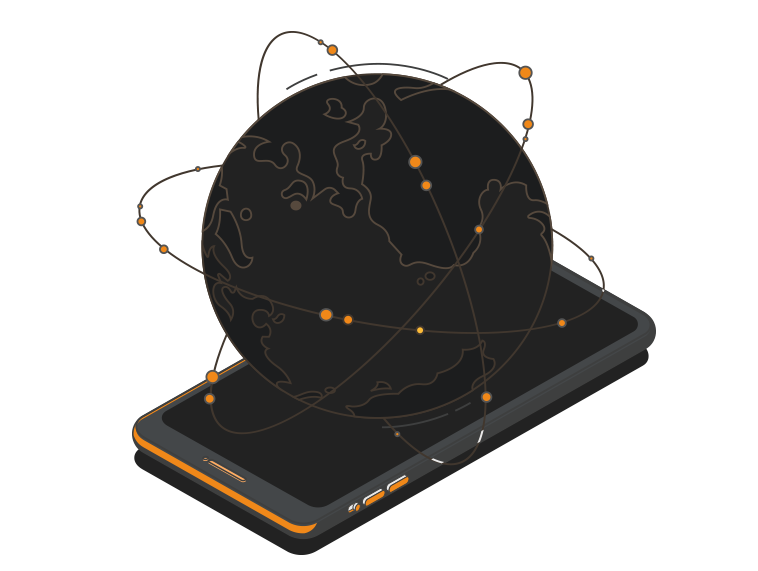“While most organizations are attempting [digital transformation], only a small percentage are getting it right.” – Harvard Business Review
The importance of data is not a novel concept anymore. All kinds of businesses have become more aware of what data can do for them and how it can be gathered through better consumer engagement. However, studies show that we are yet to harness the full potential of data to improve businesses.
Gaps in the use of data
An increasing number of companies are on their way to digital transformation and rightfully so. In order to achieve this transformation, it is pertinent to achieve data transformation and not just digitization. A study conducted by Accenture revealed that only 27% of executives are equipped and able to use the gathered data to draw insights and make actionable decisions. A study by Gartner indicates that of all documented corporate strategies employed by companies, less than 50% make use of data. The gap in the utilization of data translates into a financial impact of $9.7 million per year as measured by Gartner.
What a company needs is not just mechanisms of data processing but also effective information governance that guides and informs the analysis and use of data. Simply put, data can provide a competitive edge and companies have to address gaps in their critical use of data.
Making machines extract
In the growth that businesses have made thus far in the field of data management and analysis, data has been made increasingly machine-readable. Developing intelligent data processing systems can lead to the company developing real-time intelligence that informs various verticals.
The changes taking over the market ever so often and the process of digital transformation itself demand new types of data to stay ahead of the way. While a considerable part of this data is used in familiar ways, there is also a surge in unstructured data. There has been a strong rise in a new generation of tools that have effectively automated the laborious task of data management to organize all of the data that is coming in to render it useful and simultaneously, filter out the data that will not add value. An essential outcome of this process is the application of proprietary data. Proprietary data is information that is only available to a particular company and becomes the secret weapon that can be used for competitive advantage or creating a unique identity or service.
Compress and interpret data
Besides the direct application of data to design better consumer experiences, there are more ways in which data can and should be used. According to a recent assessment by Qlik, there are several areas of business that could directly benefit through the complete use of data and justify the increased investment of important resources that are currently being made in data analytics. More in-depth customer intelligence is not simply better empathy mapping and consumer persona building. It can also inform the predictions of market forces concerning the consumers that leverage that for the better supply chain management.
During the uncertain times that we face, and a continually growing online presence, building the trust of consumers through meaningful online engagement is of great value in developing trust. Readily available consumer data is the only answer to personalized and targeted engagement that has proven to be most effective.
Lean management is seen as a step towards the larger goal of digital transformation. What a company does as a response to internal transformations will determine the efficiency and profitability of the organization. This, in turn, requires organizations to ask the right questions and identify the streams of information that will enlighten the process. Gathering answers that are of no use only slows down the process of reaching the right answer and thereby its application. Optimized workflow replacements, driving down carbon footprints, and cost control measures require not just a one-time feed of data but a continuous approach similar to that of action research in order to stay lean.
Business is not just about sustaining but growing and expanding. In this context, data serves as a responsive tool that does not just give information. Interactive systems developed to process data help businesses simulate future market scenarios. This allows for predictive data in many situations, responsive to various iterations. Companies can, therefore, weigh the risks and the rewards and enable greater rewards by bypassing the risks.
Role in digital transformation—data in decision making and implementation
Contrary to what one may expect despite the new generation of data gathering and analytics, a survey by NewVantage Partners found that 48% of executives who are trying to lead data-driven organizations are faced with resistant employees. Bringing together the questions that different departments are trying to crack and developing agile analytic tools in response to these driving questions is found to be favorable. The outcomes of these unified analytic tools can be channeled in a prioritized arrangement to each vertical with minor automated specifications. Thus, a more compelling case is made for utilizing the data towards better decision making.
Role of data in the Labscove framework—data in the design process
A cornerstone in the Labscove framework is to learn and adapt. It is more than a step in the process. It is a mindset embedded in the DNA of the approach that Labscove brings to a company’s journey. Dealing adeptly with a constellation of metrics and empowering the company to harness the full potential of data into effective decision making is a commitment that Labscove offers.



